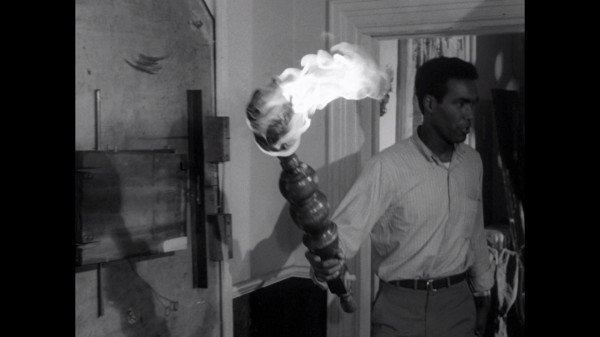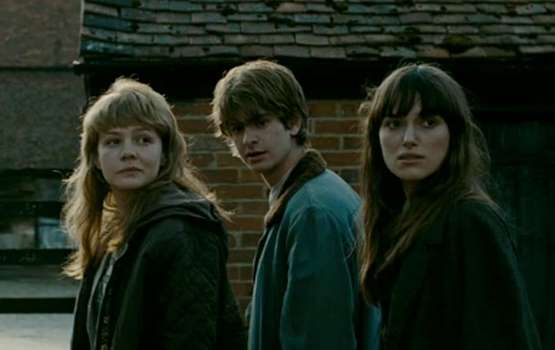Perhaps nothing satisfies your craving for top shelf, lowbrow humor quite like a John Landis film. From the Kentucky Fried Movie, Animal House, and the Blues Brothers, one should be prepared for sleazy, raunchy satirical fun. Yet Landis’ crude but effective tactics never failed to pay tribute to the works that inspired him. If imitation is the best form of flattery, An American Werewolf in London was a fitting 80s tribute to the 1941 classic, the Wolf man starring Lon Chaney Jr. In this re-telling of a grim tale, two NYU college kids were backpacking across the English countryside on a damp cool night until a vicious man-beast would forever change their fortunes.
Unless you’ve been living on the moon, one would find it extremely difficult not to have some preconceived knowledge of the werewolf curse. Werewolves continue to be one of the oldest folklore legends, so Landis made the executive decision not to waste any time with the origin of the curse. In the London hospital, the bitten survivor played by David Naughton literally referenced Lon Chaney Jr in the Wolf Man in order to blatantly spell out a familiar fate for our sympathetic character that conveniently shared the bed of his Florence Nightingale.
The film attempted no plot twists but Landis upgraded the main character’s guilt with visceral visuals of David’s nightmares and hallucinations generated by his subconscious. It’s a crude but inventive way to externalize, internalized thoughts. It’s also a vehicle to utilize some of the greatest special effects artists in the history of cinema that continue to be spoken about today. In the third act when David sat in the XXX movie theatre and spoke to his deceased best friend, one wondered if this later inspired a similar scene in Richard Kelly’s Donnie Darko. Horrific imagery might have undermined the actor’s ability to project a tortured soul but it fit Landis’ personality to perfection.
If you’ve seen this film before, try substituting the werewolf curse for socialized medicine and one might have some refreshing fun in a second take. An American college kid backpacked across England, jumped by hooligans, and taken to a London hospital. Now reconstitute this film with every public servant having dismissed a crazy American believing in the infectious idea of affordable healthcare but never doubting its existence before having to put him down for good.
In my trois liquor rating scale of one bourbon one Scotch and one beer, An American Werewolf in London rated a relaxing fall beer as a guilty pleasure to share with old friends during this Halloween.
Cheers,
Ron

















